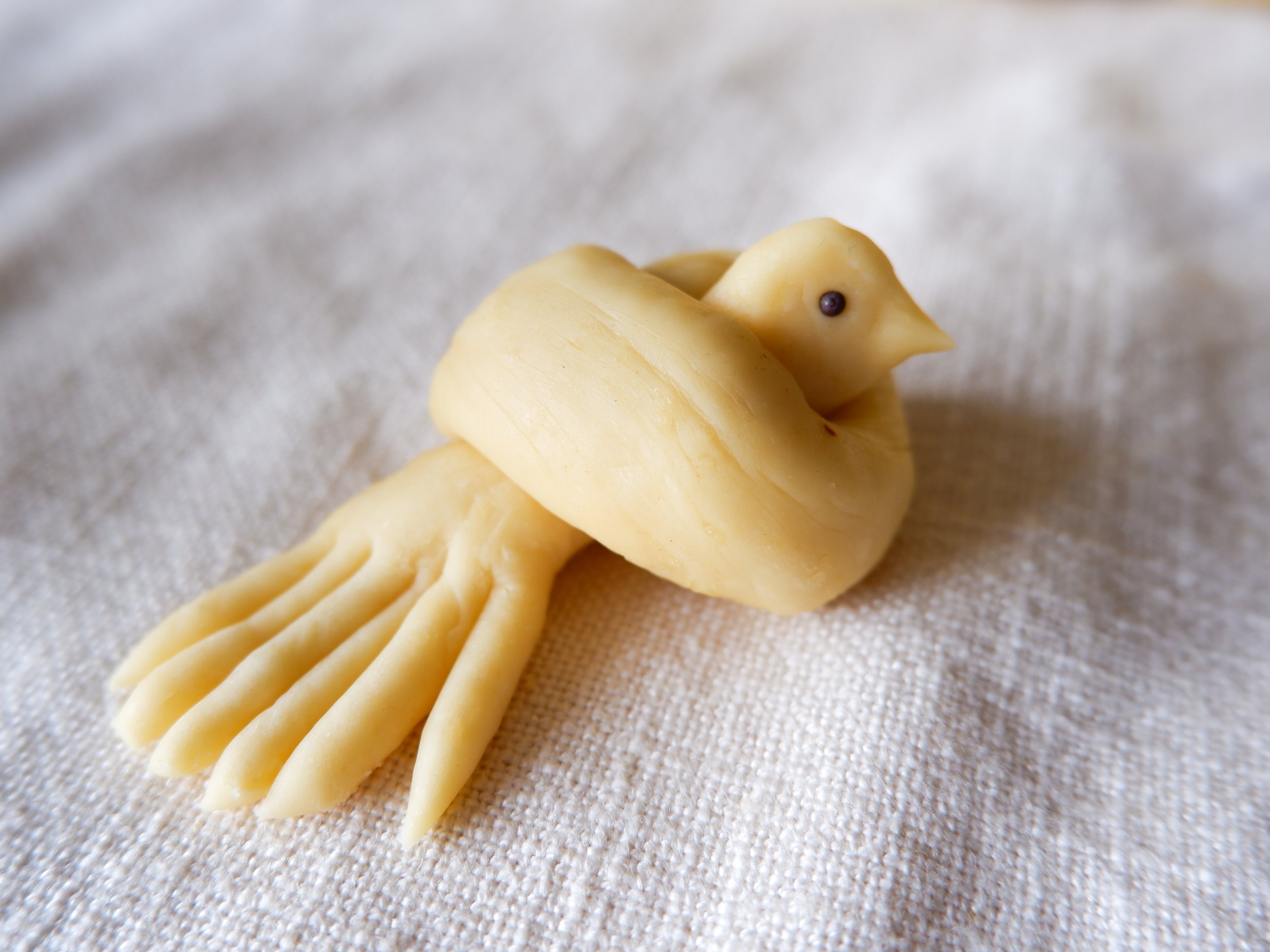Bosman Bread
Bosman is a ceremonial plaited wedding bread from Prekmurje. The word bosman is believed to have originated in the word bóze, which means a boy in medieval German. As such, bosman is a metaphor for male offspring; in some parts, the number of plaits predicts the number of children that will be born in a marriage.
The first mention of bosman dates back to the 17th, century when newlyweds were expected to make a gift of bosman to the local priest. From 1858 we have a description of the bosman, remarking that besides flowers, it was also decorated with figures of wedding guests, roosters, and cows, and that it was shaped like a baby.
Bosman played an important role in the wedding ceremony. The guests would dance with the bread before presenting it to the bride and the groom. At the end of the wedding, it was cut and offered to the wedding guests.
The dance with the bosman persisted until the 20th century, and then the bosman was slowly replaced by a modern wedding cake.
Kruh, ki prinaša srečo v zakonu
Bogataj, Janez. Taste Slovenia. Ljubljana: Rokus Gifts & National Geographic, 2007.
Recipe
Ingredients:
700 g flour
10 g instant yeast
80 g butter at room temperature
300 ml warm milk
2 tsp sugar
2 eggs
1 egg for the egg wash
Instructions:
Dough
Put flour and yeast into a large bowl, mix well, and sprinkle the salt along the edge.
In a separate bowl, mix milk, sugar, and eggs.
Add the milk mixture and butter to the flour and knead until the dough is soft and elastic (about 15 minutes with an electric mixer).
Cover with plastic wrap and let rest in a warm place until the dough has doubled in size (about 90 minutes).
Making bosman
Heat the oven to 200 C (390 F).
Take the dough and divide it into 8 pieces, 4 big ones that should be about one and a half the size of the 4 small ones.
Take the 4 big pieces and roll each out into a long strand (about 30 cm in length). Then braid them as is depicted in the pictures below. Roughly, it goes as follows. Step 1: Put the third strand over the second (2nd picture). Step 2: In the new arrangement, first take the right two strands and put the left one over the right one. In the second pair of strands on the right, put the left strand over the right strand. The idea is; if a strand went over another strand at one step, then the next time you weave that strand will go under a strand; if a strand went under a strand, the next time you weave it will go over a strand (3rd picture). Step 3: Take the middle two strands again and put the right one over the left one.
Repeat Steps 1, 2, and 3 from the previous item until you use all the dough.
Four strands.
We put the third strand over the second.
On the left, put the left strand over the right one. Do the same on the right.
Take the middle two strands again and put the right one over the left one.
- Take three smaller pieces of dough, roll them into strands (about 25 cm in length), and make a standard braid.
- The remaining dough can be used for ornaments, for example, birds as depicted below (you can use mustard seeds or cloves to shape the eyes). You can also make a spiral, by first rolling out a piece of dough, and then rolling it into a spiral.
- Place the smaller braid on top of the big braid.
- Decorate with birds and spirals and put into a warm place to rise.
- Mix egg in a cup and gently brush the bread with it.
- Bake for about 90 minutes. Cover with aluminum foil if the top starts to burn.













